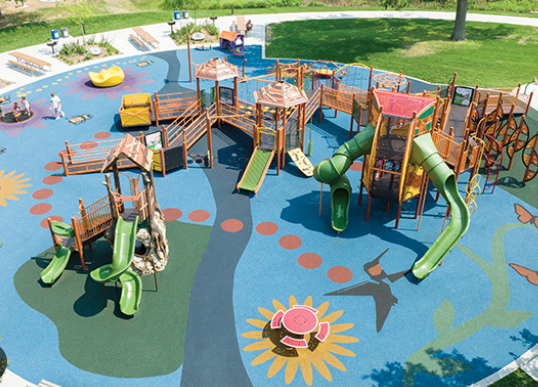Title: The Role of Landscape Architecture in Playground Design
Introduction
In today’s world, playgrounds are more than just spaces for kids to play; they are vital to childhood development and community happiness. Landscape architecture plays a crucial role in designing engaging, safe, and environmentally friendly playgrounds that cater to various age groups and abilities. This article delves into how landscape architecture transforms playground design, emphasizing its potential to foster creativity, social interaction, and a connection to nature.
Creating Engaging Spaces
Landscape architects focus on creating multifaceted environments that invite exploration and imaginative play. Playgrounds designed with diverse features—like climbing structures, water play areas, and natural elements—keep children engaged and active. Additionally, incorporating different textures and colors enhances sensory experiences, encouraging kids to interact with their surroundings in various ways. A well-designed playground not only captivates children but also promotes their cognitive and physical development.
Incorporating Natural Elements
Natural features in playgrounds can significantly enhance children’s play experiences. Accommodating elements like trees, plants, and boulders not only beautifies the space but also provides opportunities for children to learn about nature. Landscape architects can create areas for shade, habitat, and outdoor learning—making the playground a living classroom. Children exposed to natural environments tend to be more imaginative, which can aid in their overall development and well-being.
Ensuring Accessibility and Safety
Safety and accessibility are paramount in playground design, and landscape architects are skilled in creating inclusive spaces that everyone can enjoy. By following guidelines for universal design, architects can ensure play areas are navigable for children with disabilities. Accessible pathways, sensory play features, and adaptive equipment are just some ways to make playgrounds inclusive. Ensuring safety through proper material selection, layout, and maintenance is also essential, allowing parents to trust that their children can play freely without risk.
Conclusion
Playgrounds designed with thoughtful landscape architecture can enrich children’s lives and foster community connections. By focusing on engagement, natural integration, and inclusivity, landscape architects create spaces that promote health, creativity, and learning. If you’re interested in the impact of play spaces on childhood development or want to explore how landscape architecture can enhance your local playground, don’t hesitate to reach out to professionals in the field or explore additional resources. Together, we can create vibrant and welcoming environments for future generations.

